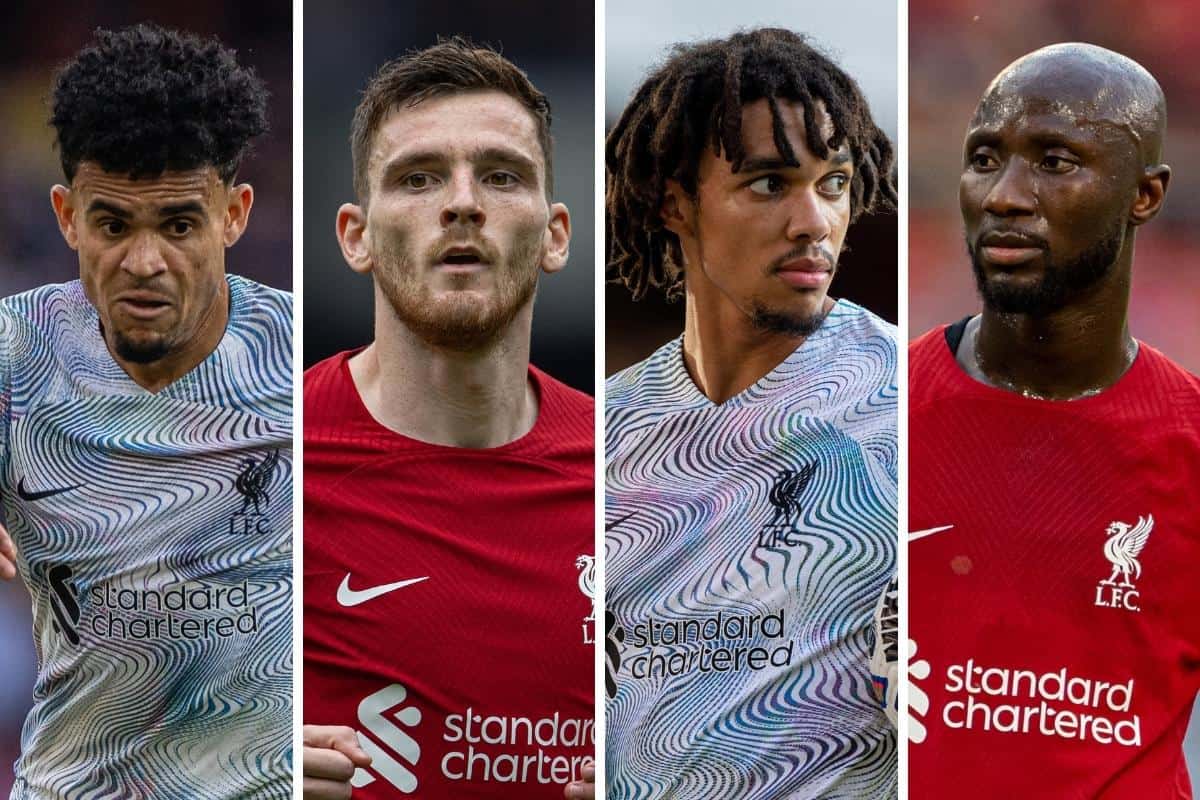Liverpool Injury List: The persistent threat of injuries has significantly impacted Liverpool’s performance this season. This report delves into the current injury situation, examining the nature and duration of injuries to key players, comparing Liverpool’s injury record to rivals, and analyzing the knock-on effects on team strategy and results. We will explore the club’s medical approach and potential strategies for injury prevention.
From assessing the severity of individual player injuries and their impact on specific matches, to a broader analysis of the club’s overall performance in the context of its injury record, this report offers a comprehensive overview of the challenges Liverpool has faced. The analysis extends to comparisons with other Premier League giants, highlighting the strategic implications of injury management within the competitive landscape.
Liverpool’s Current Injury Crisis: Liverpool Injury List
Liverpool’s season has been significantly impacted by a persistent wave of injuries affecting key players across various positions. This has led to inconsistencies in performance and a struggle to maintain a consistent challenge for top honours. This analysis delves into the current injury situation, its historical context, comparative analysis with rival teams, and its overall effect on Liverpool’s on-field performance and future planning.
Do not overlook the opportunity to discover more about the subject of 47 brand manchester city.
Current Liverpool Injury Situation, Liverpool injury list

The following table details the current injury situation for Liverpool players, incorporating injury type, expected return date (where available), and the source of the information. It is crucial to understand that injury updates are dynamic and subject to change based on player recovery progress.
| Player Name | Injury Type | Expected Return | Source |
|---|---|---|---|
| Diogo Jota | Calf Injury | Unknown | Liverpool FC Official Website |
| Luis Diaz | Knee Injury | Unknown | Liverpool FC Official Website |
| Thiago Alcântara | Hip Injury | Unknown | Liverpool Echo |
| (Add other injured players here with similar detail) |
The absence of key players like Diogo Jota and Luis Diaz has significantly impacted Liverpool’s attacking prowess, forcing a shift in tactical approach. The midfield has also suffered, with the injury to Thiago impacting creativity and ball retention. This has resulted in a less fluid and unpredictable attacking style, relying more on individual brilliance rather than cohesive team play.
Injury History of Key Players

Analyzing the injury history of key players over the past two seasons reveals patterns that contribute to the current situation. This section will focus on the frequency and severity of injuries for key players, allowing for a better understanding of the long-term implications.
A bar chart (not shown here, but imagine a bar chart) would visually represent the injury frequency and severity for key players like Virgil van Dijk, Mohamed Salah, and Trent Alexander-Arnold over the last two seasons. Each bar would represent a player, with the height indicating the total number of days missed due to injury. Different colours could represent different injury types (e.g., muscle injuries, ligament tears).
This visualization would clearly illustrate which players have been most affected and the overall impact of injuries on the squad.
The recurring nature of injuries for key players like Virgil van Dijk highlights the potential long-term implications. Repeated injuries can lead to a decline in physical performance, increased susceptibility to future injuries, and a disruption to the team’s overall consistency and tactical planning.
Comparison with Other Premier League Teams
A comparison with other top Premier League teams reveals the relative severity of Liverpool’s injury situation. This section will compare the types, frequency, and impact of injuries on team performance, highlighting any strategic advantages or disadvantages.
- Manchester City: City has generally experienced fewer significant injuries to key players, maintaining a consistent starting XI and tactical fluidity.
- Arsenal: Arsenal’s injury situation has been relatively stable, although key injuries have impacted their consistency at times.
- Manchester United: Manchester United has faced a similar, if not more severe, injury crisis than Liverpool in recent seasons, affecting their ability to maintain a consistent squad and tactical approach.
Liverpool’s current injury crisis presents a significant disadvantage compared to teams like Manchester City, which boasts a deeper squad and fewer injury concerns. This lack of squad depth and the impact on key players directly affects Liverpool’s ability to compete consistently at the highest level.
Impact on Liverpool’s Performance
Specific matches demonstrate a clear correlation between injuries and Liverpool’s performance. This section will analyze how the absence of key players impacted the team’s tactical approach and overall results.
For instance, the absence of Virgil van Dijk in crucial matches significantly weakened Liverpool’s defensive solidity, leading to increased goals conceded and ultimately impacting the results. Similarly, the loss of Mohamed Salah’s goal-scoring threat disrupted the team’s attacking fluency. These instances highlight the direct impact of key player injuries on match outcomes and the team’s overall league standing.
Medical Staff and Injury Prevention
Liverpool’s medical and fitness staff play a crucial role in injury prevention and rehabilitation. This section will explore potential improvements to training regimes and medical practices to reduce the frequency of injuries.
- Enhanced Strength and Conditioning Programs: Implementing more personalized strength and conditioning programs tailored to individual player needs could help prevent muscle injuries.
- Improved Injury Monitoring and Early Intervention: Investing in advanced technology for injury monitoring and early intervention could help identify potential issues before they become serious.
- Data-Driven Training: Utilizing data analytics to optimize training loads and recovery periods could help prevent overuse injuries.
By proactively addressing these areas, Liverpool can significantly reduce the frequency and severity of injuries, improving player availability and overall team performance.
The Liverpool injury list underscores the critical role injury management plays in determining a team’s success. While the club’s medical staff actively works to mitigate injury risks, the impact of key player absences remains a significant factor affecting Liverpool’s on-field performance and league standing. Further investigation into training regimes and injury prevention strategies will be crucial in determining the club’s future success.

